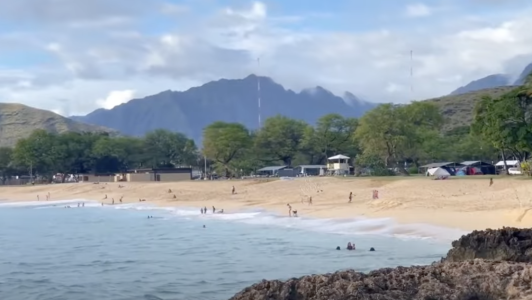Visitors to Hawaii face a new fee—but it’s not what you think
- Replies 1
Dreaming of a Hawaiian getaway—swaying palms, turquoise waves, and the scent of plumeria on the breeze?
If so, there’s a new twist to paradise you’ll want to know about before you pack your bags.
Let’s break down what this means for travelers, locals, and the future of the Aloha State.
What Is Hawaii’s “Green Fee”?
Starting January 1, 2026, Hawaii will become the first US state to introduce a “Green Fee” for tourists—a move that’s making waves far beyond the Pacific.
In a landmark move, Hawaii’s Governor Josh Green signed Act 96 into law, establishing a climate impact fee—affectionately dubbed the “Green Fee”—on all visitors staying in hotels, short-term vacation rentals, and, for the first time, cruise ships.
This fee is an additional 0.75% tacked onto the existing 10.25% transient accommodations tax (TAT), bringing the total to 11% of your nightly lodging rate.
Let’s put that in perspective: If you’re staying at a hotel with a $300 nightly rate, you’ll pay an extra $2.25 per night. Not exactly a budget-buster, but with millions of visitors each year, those dollars add up fast.

Why Now? The Urgent Need for Resilience
Hawaii’s natural beauty is legendary, but it’s also fragile.
The islands are on the front lines of climate change—rising sea levels, coral bleaching, and, most recently, the devastating 2023 Maui wildfires that claimed over 100 lives and destroyed the historic town of Lahaina.
Governor Green put it bluntly: “As an island chain, Hawaii cannot wait for the next disaster to hit before taking action. We must build resiliency now, and the Green Fee will provide the necessary financing to ensure resources are available for our future.”
Where Will the Money Go?
The Green Fee is projected to generate a whopping $100 million annually. While the specific projects to be funded will be finalized in the next legislative session, the focus is clear: environmental stewardship, climate and hazard resiliency, and sustainable tourism.
Think of it as an investment in Hawaii’s future—protecting beaches from erosion, restoring native forests, safeguarding cultural sites, and preparing for the next big storm or wildfire.
And for the first time, cruise ship passengers—who previously sailed past the TAT—will also contribute to these efforts, ensuring a fairer system across the tourism industry.
A Global Trend: Hawaii Joins the Club
Hawaii isn’t alone in this approach. Around the world, popular destinations are grappling with the double-edged sword of tourism: economic benefits on one hand, environmental strain on the other.
In recent years, Greece, Bali, and the Galápagos Islands have all introduced or increased tourist fees to fund sustainability programs. Even Venice, Italy, has experimented with a tourist tax to manage crowds and preserve its unique heritage.
Also read: The surprising truth about why your favorite potato chips now cost a fortune
The effectiveness of these fees varies. In some places, a small tax hasn’t deterred visitors but has provided much-needed funds for conservation.
In others, it’s helped manage overtourism and protect local communities. The key, experts say, is transparency and accountability—making sure the money goes where it’s needed most.
What About Locals?
One of the most significant aspects of the Green Fee is that it shifts the financial burden of climate resilience away from Hawaii’s residents.
As Chris Benjamin, leader of the Climate Advisory Team, put it: “Using the TAT to fund resiliency projects ensures that the financial burden of safeguarding our aina (island) and people doesn’t fall upon residents alone.”
Source: Island News / Youtube.
For locals, this means more resources for disaster preparedness, environmental protection, and community resilience—without having to foot the entire bill themselves.
Will It Work?
That’s the million-dollar (or, in this case, $100 million-a-year) question.
The success of Hawaii’s Green Fee will depend on how effectively the funds are managed and whether they truly make a difference in protecting the islands’ environment and communities.
The world will be watching—and so will we.
Read next: New headlines show the Trump administration is steering climate policy in a new direction

Are you planning a trip to Hawaii? Would a small Green Fee change your travel plans? Do you think other states or destinations should follow Hawaii’s lead? Or do you have concerns about how these funds will be used? Share your thoughts, experiences, and questions in the comments below!
If so, there’s a new twist to paradise you’ll want to know about before you pack your bags.
Let’s break down what this means for travelers, locals, and the future of the Aloha State.
What Is Hawaii’s “Green Fee”?
Starting January 1, 2026, Hawaii will become the first US state to introduce a “Green Fee” for tourists—a move that’s making waves far beyond the Pacific.
In a landmark move, Hawaii’s Governor Josh Green signed Act 96 into law, establishing a climate impact fee—affectionately dubbed the “Green Fee”—on all visitors staying in hotels, short-term vacation rentals, and, for the first time, cruise ships.
This fee is an additional 0.75% tacked onto the existing 10.25% transient accommodations tax (TAT), bringing the total to 11% of your nightly lodging rate.
Let’s put that in perspective: If you’re staying at a hotel with a $300 nightly rate, you’ll pay an extra $2.25 per night. Not exactly a budget-buster, but with millions of visitors each year, those dollars add up fast.

Hawaii has become the first US state to introduce a “Green Fee,” raising its accommodation tax for tourists to fund climate change and environmental projects. Image source: Wanderlust Wellman / Youtube.
Why Now? The Urgent Need for Resilience
Hawaii’s natural beauty is legendary, but it’s also fragile.
The islands are on the front lines of climate change—rising sea levels, coral bleaching, and, most recently, the devastating 2023 Maui wildfires that claimed over 100 lives and destroyed the historic town of Lahaina.
Governor Green put it bluntly: “As an island chain, Hawaii cannot wait for the next disaster to hit before taking action. We must build resiliency now, and the Green Fee will provide the necessary financing to ensure resources are available for our future.”
Where Will the Money Go?
The Green Fee is projected to generate a whopping $100 million annually. While the specific projects to be funded will be finalized in the next legislative session, the focus is clear: environmental stewardship, climate and hazard resiliency, and sustainable tourism.
Think of it as an investment in Hawaii’s future—protecting beaches from erosion, restoring native forests, safeguarding cultural sites, and preparing for the next big storm or wildfire.
And for the first time, cruise ship passengers—who previously sailed past the TAT—will also contribute to these efforts, ensuring a fairer system across the tourism industry.
A Global Trend: Hawaii Joins the Club
Hawaii isn’t alone in this approach. Around the world, popular destinations are grappling with the double-edged sword of tourism: economic benefits on one hand, environmental strain on the other.
In recent years, Greece, Bali, and the Galápagos Islands have all introduced or increased tourist fees to fund sustainability programs. Even Venice, Italy, has experimented with a tourist tax to manage crowds and preserve its unique heritage.
Also read: The surprising truth about why your favorite potato chips now cost a fortune
The effectiveness of these fees varies. In some places, a small tax hasn’t deterred visitors but has provided much-needed funds for conservation.
In others, it’s helped manage overtourism and protect local communities. The key, experts say, is transparency and accountability—making sure the money goes where it’s needed most.
What About Locals?
One of the most significant aspects of the Green Fee is that it shifts the financial burden of climate resilience away from Hawaii’s residents.
As Chris Benjamin, leader of the Climate Advisory Team, put it: “Using the TAT to fund resiliency projects ensures that the financial burden of safeguarding our aina (island) and people doesn’t fall upon residents alone.”
Source: Island News / Youtube.
For locals, this means more resources for disaster preparedness, environmental protection, and community resilience—without having to foot the entire bill themselves.
Will It Work?
That’s the million-dollar (or, in this case, $100 million-a-year) question.
The success of Hawaii’s Green Fee will depend on how effectively the funds are managed and whether they truly make a difference in protecting the islands’ environment and communities.
The world will be watching—and so will we.
Read next: New headlines show the Trump administration is steering climate policy in a new direction
Key Takeaways
- Hawaii has become the first US state to introduce a “Green Fee,” raising its accommodation tax for tourists to fund climate change and environmental projects.
- The fee will apply from January 1, 2026 to hotels, short-term rentals and, for the first time, cruise ships, adding 0.75% to the existing tax (totalling 11%) on nightly stays.
- The new law is expected to raise $100 million annually for projects such as climate disaster resilience, environmental protection and sustainable tourism across the islands.
- The move comes in response to disasters like the 2023 Maui wildfires and aims to ensure all visitors—not just residents—contribute to protecting Hawaii’s economic and natural resources.
Are you planning a trip to Hawaii? Would a small Green Fee change your travel plans? Do you think other states or destinations should follow Hawaii’s lead? Or do you have concerns about how these funds will be used? Share your thoughts, experiences, and questions in the comments below!






